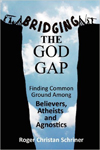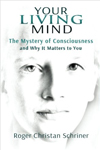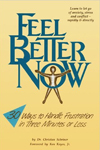This is a continuation of the above post. I am also posting this entry on some of my other sites.
ILLUSION NUMBER ONE, PART TWO
Your Many Minds
©Rev. Chris Schriner 2022
Unitarian Universalist Fellowship of Sunnyvale
June 12, 2022
Two weeks ago you and I managed to eavesdrop on a lecture which was presented on another planet. Isn’t wireless technology amazing these days? The space alien who gave that lecture was actually willing to come here today and speak with us for free, but he wanted 50 cents a mile for travel which is an amount somewhat larger than the National Debt.
This space creature was an intergalactic anthropologist who had recently visited Earth to study human beings. He ended up being quite puzzled by the human concept of “self,” for three different reasons. First, he said that Earth people seemed to think each person is separate from the world around them – as if their skin is a wall, with the “self” on the inside and everything else on the outside. Second, humans imagine that they continue through the passage of time, as if there were some personal essence that stays the same from the moment of conception onward. And third, Earthlings believe that each body contains a single personality, even though our inconsistent and even contradictory actions show that there are many, many minds inside every human head.
So do I agree with the spaceman? No – and yes. I do think our human concept of “self” is useful and fits a lot of the time, but sometimes it misleads us and gets us into trouble.
It’s easy to assume that the concepts we use must be either right or wrong. If an idea is right, keep it. If it’s wrong, throw it out. But concepts are only tools for helping us deal with our lives. Our little beliefs about the world do not match its complexity, and reality can be described in many ways. Instead of asking whether we do or do not “have a self,” we should ask in what ways this idea is useful and in what ways it is not.
Sometimes we should actually accept two contradictory beliefs, because each one gives us part of the truth. Think of the way physicists talk about light. In some ways light is like a wave; in some ways it’s like a particle, and neither of these is exactly right. Saying my own personality is separate from yours, endures through time, and is internally consistent is also helpful, but not exactly right. So we can ask in what ways the idea of self is useful or is not.
I mostly agree with the spaceman about the way our supposedly separate selves are interpenetrated by the world around us, especially the social world of culture and relationships. It has been said that the basic unit of humanity is not the individual. The basic unit of humanity is two or more people in relationship. We are born into relationship, and even a long-time hermit cannot live or die alone. Other people will always be inside of us. A rabbi once commented,
“If I am I because you are you, and if you are you because I am I, then I am not I, and you are not you” (Alan Watts, The Book: On the Taboo Against Knowing Who You Are, p. 102).
So I mostly agree with the spaceman that our supposedly separate selves are interpenetrated by the world around us. But I don’t entirely agree with him about continuity and consistency. I’ll talk about these issues now, and then I’ll mention some implications for UU theology.
The speaker from the planet Centros last week claimed that instead of continuing through time, we are actually being born again each moment. I partly agree, but some aspects of us stay the same for long periods of time. Each of us is like a flame, always changing and yet somehow retaining its shape. Or think of a river. A river’s flowing waters never hold still, yet the river is always there. Just like a river, people both are and are not the same from moment to moment. We needn’t argue about which side of the paradox is “correct.” And most all of us have sometimes wished we could change, wishing we could outgrow some old habits or emotional patterns.
My favorite way to picture both personal change and continuity is to imagine myself as a sequence of beads on a string. If you think of this day as a long string of moments, the various states of mind you will experience today are like beads threaded onto your life-string, one at a time. Right now you may be feeling curious, the next minute confused, then interested, then irritated, then amused. Each of these attitudes uses different parts of your brain, as different beads slide into place on the long strand of time. To a great extent, each of us draws upon the same collection of beads, but in various quantities and in varying sequences. Your pattern of beads is different from mine, and therefore it’s a different necklace. Because each of us has a unique pattern of small, transitory minds, each of us is unique. Spiritual growth involves changing the beads on our string so that some of them appear less frequently and others appear more often. When that happens, we have changed.
Becoming aware of our own mind-shifts can help us realize our close kinship with each other. For example, when I’m angry, I am probably much more similar to the way you are when you’re angry than I am to myself when I’m not upset. That’s obvious, but it has important implications. For one thing, it gives us realistic hopes for human progress. If each person contains various sub-personalities, various colors and shapes of beads, we can find ways to call forth the more positive sides of ourselves and each other, calling forth love instead of hate, compassion instead of aggression. And if a destructive sub-personality is currently in control of someone, we may be able to awaken and mobilize a more positive sub-self that is momentarily hidden behind anger or mistrust.
So perhaps the spaceman was a little one-sided in emphasizing our changeability. But I admit that over time many small changes may add up to major transformations, so that we are surprised as we look back at the way we were. And as a psychotherapist I found that people often underestimate the extent of their own positive changes. We should give ourselves credit for these improvements. Sit down some time and think about how you were 20 or 30 years ago. One way to do that is to get out an old photo album and gaze at pictures of yourself. This may remind you of old attitudes and behaviors that you have outgrown.
In one of Ben Watterson’s Calvin and Hobbes comic strips, Calvin is looking through a photo album, and says to Hobbes, “This is a photograph of me when I was two. It’s strange. I know that’s me, but I don’t feel any connection to this image…. Isn’t it weird that one’s own past can seem unreal? This is like looking at a picture of somebody else.”
Hobbes looks at the photo and agrees: “A slobbering nudist with legs like link sausages.”
And Calvin adds: “You know, now I can’t stand to wad a soggy blanket in my mouth.”
Sometimes we find ourselves clearly moving from one phase of life to the next. We have rites of passage for some of these changes–graduations, weddings, retirement parties, religious vows, and coming of age ceremonies. But there are many other transitions that alter personal identity: getting divorced, switching careers, moving to another town, confronting or recovering from a serious illness, seeing our last child leave home, or committing ourselves to breaking free from some addictive behavior. When you enter a new phase of life, why not create your own rite of passage to mark this transition? Unitarian Universalists have full permission to invent their own rituals, and I’ll bet some of you have done that and benefitted.
So last week the spaceman emphasized how humans change, and I would balance that by recognizing our continuity. He also criticized us for thinking we are internally consistent, and I agree that we often underestimate our inconsistency. From moment to moment, we may change so much that it’s as if another personality took charge. I’m not saying we have what psychotherapists call multiple personalities. For one thing, with multiple personalities, the different personalities are often unaware of each other’s existence. But even with “normal” individuals, inside each person’s head is not just one mind, but many. It’s as each of us contains an enormous theater company, performing a drama in which only one character can be on stage at any moment. The various actors keep stepping in and out of the spotlight. And these little selves are so nimble that they can hop on and off stage in just seconds. Listen to this reading, adapted from the writings of a spiritual teacher named P. D. Ouspensky.
A person has no … single, big I, but is divided into a multiplicity of small I’s. And each separate small I is able to call itself by the name of the Whole, to act in the name of the Whole, … to make decisions, with which another I … will have to deal. This explains why people so often make decisions and so seldom carry them out. Someone decides to get up early beginning from the following day. One I, or a group of I’s, decide this. But getting up is the business of another I who entirely disagrees with the decision and may even know absolutely nothing about it. Of course the person will again go on sleeping in the morning and in the evening will again decide to get up early … it is the tragedy of the human being that any small I has the right to sign checks and promissory notes…. People’s whole lives often consist in paying off the promissory notes of small accidental I’s” (P. D. Ouspensky, In Search of the Miraculous, cited in Elizabeth O’Connor, Our Many Selves: A Handbook for Self-Discovery, pp. 36-37).
So those are some thoughts about what the visitor from Centros told us. I also want to say a little about theological aspects of this multi-dimensional view of self. Two weeks ago the spaceman noted that “some … religions … teach that God judges each person as either good or bad … They then project this limited and ignorant understanding onto their gods.” Of course I completely agree. And since we contain many little minds, our philosophies of life may very well contain contradictions. Many believers have doubts, and skeptics may have sub-personalities that pray. But traditional religions often say it’s sinful to have more than one religious viewpoint. That can be a problem, in a mixed-faith marriage. But if both spouses can realize that there are lots of good ways of looking at reality, that may help them become more accepting of each other’s beliefs.
Unitarian Universalism allows theological inconsistency. When I was minister at Mission Peak UU in Fremont one of our members told me, “In other churches I always felt like I had to suppress part of my own spirituality, But here I can talk about all of my religious ideas, even if some of them clash with each other. And if I change my beliefs, no one calls me a heretic or a backslider. I have finally found a place where I can feel at home with every side of my personal philosophy of life.”
So human personality is full of paradoxes. In some ways I am separate from the rest of the cosmos, but in other ways I am part of all that exists. In some respects I persist through time, but I can also imagine myself being born again each moment. Sometimes it helps to think of myself as one organism, but other times it’s better to see myself as a committee, or an entire congress.
One more idea: Self-acceptance is selves-acceptance. And if we learn to notice and welcome and become acquainted with our many minds, guess what happens? Another sub-personality begins to appear more and more frequently, a special sub-personality that sees all the other little minds, noticing them just as they are without judging them. The spiritual teacher Ram Dass called this inner observer the witness. The witness knows that change and multiplicity is our natural condition. We can “turn on” this inner observer when we notice that a destructive part of us has taken control. In most people this meta-viewpoint barely exists, but the more we observe our minds, the more powerful the witness becomes. This enables us to see ourselves more clearly, minimizing self-deception. And as this fair witness watches without judgment, it speaks an impartial and unending benediction of acceptance – “Blessed be, blessed be, blessed be.”




